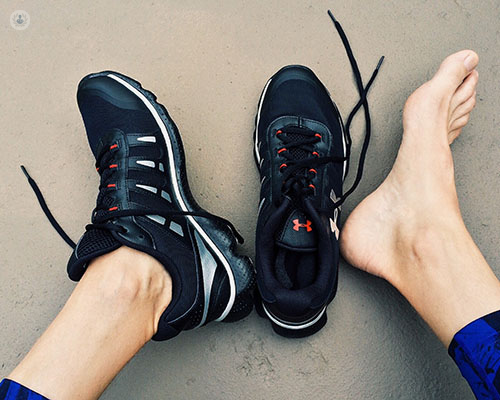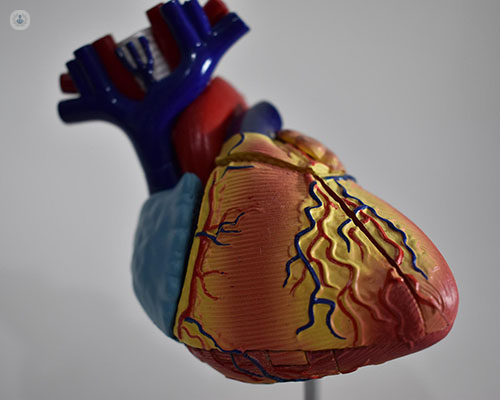Hypermobility
Dr Clarissa Pilkington - Rheumatology
Created on: 11-03-2015
Updated on: 11-02-2023
Edited by: Conor Dunworth
What is joint hypermobility?
Joint hypermobility, also called hypermobility or Ehlers-Danlos syndrome is a hereditary disorder that occurs when a person has greater flexibility in joints, tendons, muscles and cartilage.

What are the symptoms?
Joint hypermobility can produce symptoms such as:
- Backaches and scoliosis
- Pain in muscles and joints, such as the knees, fingers, hips and elbows
- Muscle stiffness and spasms
- Easy predisposition to bruising
- Dislocations
- Symptoms outside the joints, such as varicose veins, hernias or stretchy skin
Is hypermobility a disability?
Whether or not hypermobility is considered a disability depends on the severity of the symptoms. Many people with hypermobility syndrome only have mild symptoms, and only in a few joints. For others, their life can be seriously affected by the syndrome. It can impede them from carrying out basic daily living tasks.
However, the symptoms of hypermobility syndrome can come and go, so people may be considered disabled for certain periods of time, and not disabled during others. This all depends on the individual symptoms you experience.
Why does hypermobility occur?
The exact cause of joint hypermobility is unknown, however, it has been confirmed that genetics play a major role. It is thought that a genetic mutation in the collagen fibres that affect the elasticity of tendons, ligaments, the skin and blood vessels causes the condition. Hypermobile joints are often referred to as loose joints and those with the condition are referred to as being “double jointed”.
Who is most likely to be affected by joint hypermobility?
Hypermobility is believed to be a common condition, with up to one in five people in the United Kingdom having hyper-mobile joints. It is more common among the younger generation, as the joints can often stiffen with age. It is also less common among white people and the male population.
Can joint hypermobility be prevented?
As the disorder is genetic in nature, it cannot be prevented, but complications can be avoided. Exaggerated flexion of the wrists or joints in the fingers should be avoided, that is, the fingers and the wrists shouldn’t be overextended or cracked. High-impact exercises should also be avoided.

How is joint hypermobility treated?
Currently, there is no specific cure, but the effects can be mitigated with drugs (analgesics and non-steroidal anti-inflammatory drugs) and low-impact exercises, such as yoga or swimming. Improving muscle strength to protect the joints is vital, so your doctor may recommend occupational therapy or physiotherapy sessions to help with symptoms. You can also take home measures to reduce pain and stiffness by keeping joints warm, such as having warm baths and using deep heat gels. Paracetamol or ibuprofen can also help ease symptoms.
If you are suffering from severe pain and none of the above treatments have eased the symptoms, you may be referred to a pain clinic by your GP.

How can I exercise safely with hypermobility syndrome?
People with hypermobility syndrome need to be more aware of how to train safely. One of the tips that many doctors give is to skip stretching before a workout. This is due to the fact that it can put too much stress on hypermobile joints, which can lead to injury.
It is also recommended to avoid 'end ranges' when working out. This means avoiding fully extending the joint, for example at the top of a push up. Instead, try to keep the elbows, or any other joint, always a small bit bent throughout the entire exercise.
People with hypermobility syndrome should also avoid training to fatigue. It is always better not to put too much stress on the joints, and the easiest way to achieve this is by ensuring you don’t overwork them when exercising. The focus should be on doing the exercise well while protecting your joints, instead of the number of reps or length of time spent exercising.
Can hypermobility affect the heart?
People who have hypermobility generally do not suffer from heart problems. However, some rare types of Ehlers-Danlos Syndrome often present with cardiovascular problems. One of the most common cardiovascular issues is postural tachycardia syndrome (PoTS).
This can occur as the part of the nervous system that controls involuntary bodily functions, such as the heart rate, can often malfunction due to hypermobile EDS, causing PoTS. Symptoms of PoTS include low blood pressure, a rapid heartbeat and bladder and digestive problems, alongside temperature and sweating dysregulation.

Can EDS affect other parts of the body?
Yes. For example, EDS can have an effect on the digestive tract, as it often causes involuntary bodily acts to malfunction. This can lead to irritable bowel syndrome (IBS) or acid reflux. It can also lead to problems in the GI tract such as hernias.
Some types of EDS also affect the gums, teeth or mouth. Hypermobility of the jaw joint (temporomandibular) can also lead to facial pain or dislocations.










